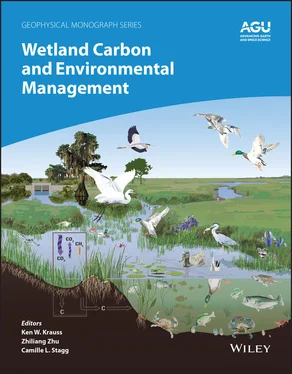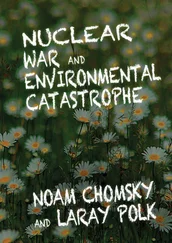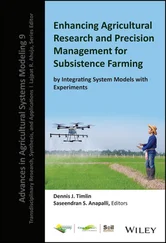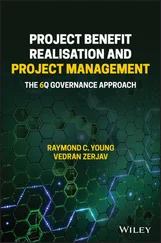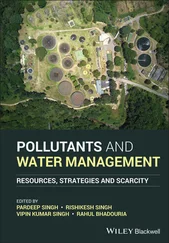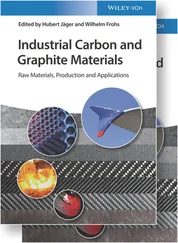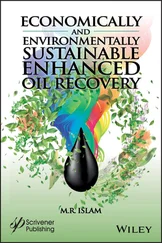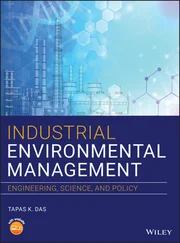According to the Intergovernmental Panel on Climate Change Fifth Assessment Report (Ciais et al., 2013), for the period 2000–2009, global carbon stocks are distributed across the major components of the Earth system in the following reservoirs (where 1 Petagram = 1 PgC = 10 15gC): the atmosphere (829 PgC); the oceans (38,858 PgC, including surface, intermediate, deep sea, and dissolved organic carbon and marine biota); ocean sediments (1750 PgC); vegetation (420–620 PgC), permafrost (~1700 PgC, includes yedoma deposits); and soils (1500–2400 PgC, including litter), and with fossil fuel reserves ranging from 637–1575 PgC. Wetland soil carbon was estimated to account for 300–700 PgC (Bridgham et al., 2006), and when combined with permafrost (although with some double counting), the total wetland soil carbon stocks range from 2000–2400 PgC. While the oceans are the largest pool of carbon, most of this is not available to be exchanged with the atmosphere on decadal to centennial timescales and thus the carbon stored in vegetation and soil is more relevant when considering anthropogenic carbon‐climate feedbacks. The observed 40% increase in atmospheric carbon (~240 PgC increase) from fossil fuel and land‐use change activities since 1850, has led to an almost 1 °C change in global mean surface temperature, and represents a smaller order of magnitude of carbon than the combined vegetation and soil carbon pools. This means that understanding the distribution and processes responsible for global wetland carbon accumulation and oxidation is directly relevant for the climate system.
1.1.2. Wetland Definitions
Wetlands are defined by having unique hydric soils, vegetation, and hydrology due to their topographic position. Wetlands can be saltwater, freshwater, or brackish, develop carbon rich histosol soils, and host diverse aquatic adapted flora and fauna. There are many ways that the soil, vegetation, and hydrology properties can intersect with one another and this has led to a large range of wetland types and an extensive and complex nomenclature that includes more familiar categories such as “swamps,” “bogs,” and “marshes” to less familiar categories including “morass,” “muskeg,” and “carr.” Here, we loosely follow the comprehensive wetland classification system established by Cowardin et al. (1979), used by many State and Federal agencies in the United States and by international treaties such as the Convention on Wetlands of International Importance (RAMSAR). The Cowardin system groups wetlands into five major systems: Marine, Estuarine, Riverine, Lacustrine, and Palustrine. In addition, the Cowardin system includes permafrost as wetlands, meaning that almost the entire Arctic region is treated as a wetland. Arguably, permafrost does not fulfil the criteria for the Cowardin wetland definition, i.e., hydrology or soil type or vegetation. Here, we distinguish between permafrost soils and high‐latitude wetlands (both organic soil and mineral) aligned more closely with the classification system developed by the Canadian National Wetlands Working Group (1997). We do not provide a detailed carbon stock section for submerged reef habitats or sea grasses, and, instead, the combined estimate of Duarte (2017) is used in our summary table. We also do not provide estimates of carbon stocks in the sediments of non‐vegetated, mainly Lacustrine, wetland subclasses that include rivers, lakes, and small ponds. Fig. 1.1shows the global distribution of wetlands based on a combined remote sensing and inventory based integration, with key wetland complexes visible, such as the Hudson Bay Lowlands, the Western Siberian Lowlands, the Cuvette Central, Sudd wetlands, Okavango Delta in Africa, and the Pantanal wetlands and Amazonian lowlands in South America.
1.1.3. Overview of Chapter
The chapter is organized first by introducing methodologies used to estimate above‐ and belowground carbon stocks, describing field methods, remote sensing, and ecological modeling approaches. A combination of these three methods is used in most regional‐ to global‐scale accounting of carbon stocks, where field data constrain models that are used to interpret remote sensing observations of vegetation indices or soil moisture. The second section of the chapter provides a review of carbon stock estimates for boreal wetlands (permafrost and peatlands separately, and mineral soil wetlands), tropical peatlands, temperate wetlands (peatlands and mineral‐soil systems), and for coastal ecosystems (mangroves and tidal marshes). The last section of the chapter describes how land‐use change has affected wetlands, through drainage, degradation, and peat harvest, and more recently the conversion of tropical wetlands to oil palm plantations, and then presents how climate change is expected to affect wetland carbon stocks through increases in air temperature but also via changes in precipitation regimes.
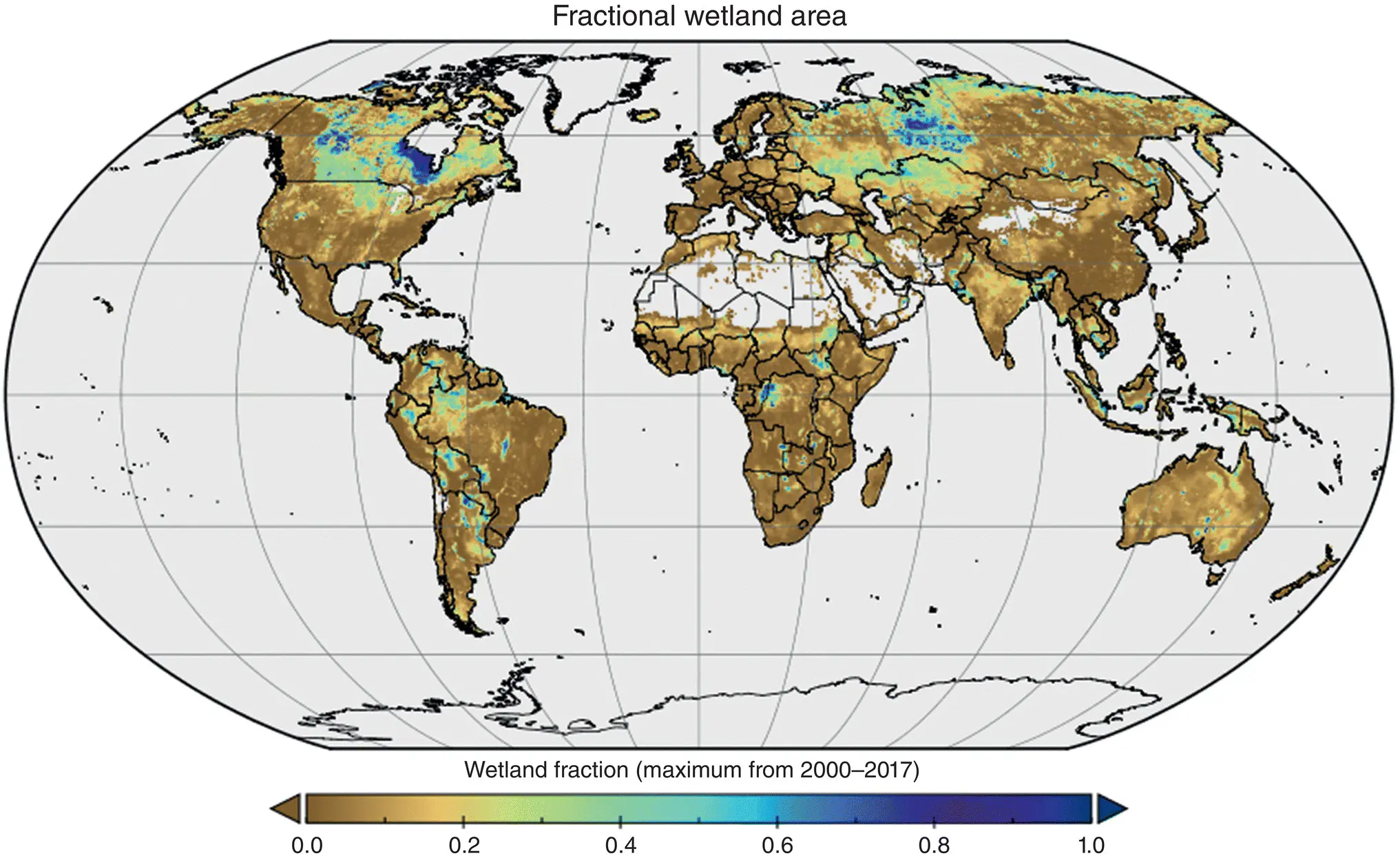
Figure 1.1 Global maximum extent of vegetated wetland area using the Wetland Area Dataset for Methane Modeling (WAD2M, based on Zhang et al., 2020), which is the basis of the wetland methane budget for Saunois et al. (2020). The dataset combines surface inundation data from the Surface Water Microwave Product Series V3.2 (SWAMPS) with inventories of tropical wetlands (Gumbricht et al., 2017), temperate wetlands (Lehner and Doll, 2004) and high‐latitude wetlands (Hugelius et al., 2014). Inland waters are removed using the Landsat permanent water bodies dataset of Pekel et al. (2016) and rice cultivated areas removed using MIRCA2000.
1.2. PAST CHANGES IN WETLAND CARBON STOCKS
1.2.1. Holocene Timescale
The quantity of carbon stored in wetlands fluctuates over millennia due to climate, glacial retreat, and, more recently, from human activities that include peat extraction or drainage. Simulations of wetland extent at the Last Glacial Maximum (LGM) show wetlands were more expansive than at present, but these areal estimates remain uncertain (Kaplan, 2002; Kaplan et al., 2006). For example, larger areas of Amazonian wetlands during the mid‐Holocene have been invoked as drivers of CH 4flux to explain atmospheric CH 4over this period (Singarayer et al., 2011). The fate of carbon in coastal wetlands submerged by the simultaneous sea level rise is less understood.
Subsequently, Holocene expansion of boreal peatlands in previously glaciated areas has sequestered significant amounts of carbon. Currently, it is thought that the catotelm in the peatlands north of 40°N alone could have accumulated 330 PgC (240–490 PgC) over the past the past 8000 years (Kleinen et al., 2012). Globally, carbon stocks in peatlands estimated from peat cores is 103 ±9 PgC and 145 ±13 PgC for the periods 11–9 kyBP and 9–7 kyBP, respectively, while earth system models estimated stocks of 54 PgC and 76 PgC for these two time periods (Stocker et al., 2014).
Carbon storage in wetlands has declined due to anthropogenic land use and land cover change, primarily from conversion to cropland, forestry, urban area, and peat extraction over the past millennia and centuries (Joosten and Clarke, 2002; Asselen et al., 2013). Artificial soil drainage also exposes soil organic carbon, accumulated over millennia, to aerobic oxidation, leading to large carbon fluxes to the atmosphere (Erb et al., 2017; Armentano, 1980). The global area of drained wetlands is estimated to be as high as 71% since 1700 (Davidson, 2014), and 35% since 1970 according to recent meta‐analyses (Dixon et al., 2016; Darrah et al., 2019), while mapping approaches estimate cumulative wetland losses to be 33% (Hu et al., 2017). The uncertainty in wetland area loss presents a challenge to estimating losses in soil carbon storage.
Читать дальше
